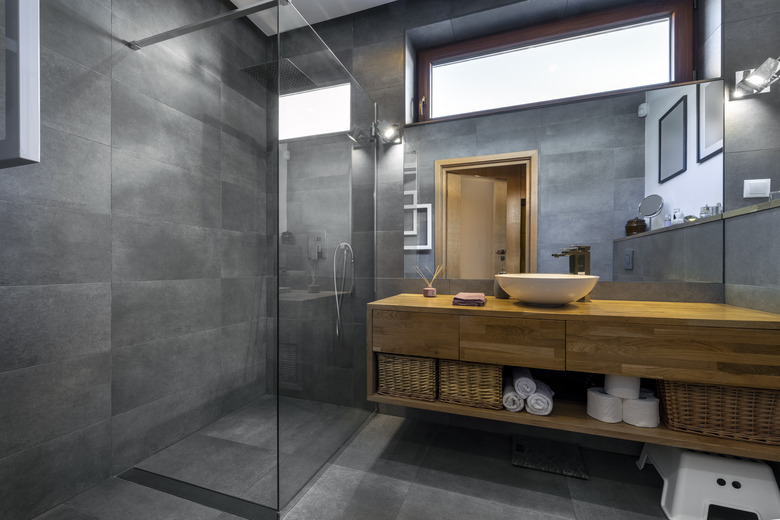Alternatives To Ducted Bathroom Fans
We may receive a commission on purchases made from links.
Since the 1980s, bathrooms have become increasingly valued in American homes. They're bigger and better than ever, and bathrooms are big on wish lists for homeowners who want to make improvements. Whether you're stuck updating an older bathroom that has limited solutions available or you're changing things up and adding a bathroom to a space where no ducting exists to properly ventilate your bathroom, you still have a couple of options.
Why Ventilation Matters
Why Ventilation Matters
Most building codes have stipulations about bathroom ventilation, the reason being that excess moisture causes all kinds of problems. Mold can grow; paint and wallpaper can peel; cabinets and wood fixtures can buckle or warp.
Built-In Solutions
Built-In Solutions
Ductless exhaust fans are a great solution for those who can afford to invest in the problem. They don't need exterior venting of any kind because they recirculate the air after passing it through a filter, typically a charcoal filter. They're affordable and easy to install and are the best solution for interior rooms that don't have walls that lead to the outside. Keep in mind, noise can be a big irritant with bathroom fans, so look for a noise rating, or "sone," level of 1, versus 3 or 4.
Wall fans are great if you're in a reasonable climate where it's not a problem to have the fan opening to the outside. They're installed in the wall, obviously, and are best installed on an outside wall so it's venting to the outdoors. Look for a fan that can be shuttered for storms or, say, when flying ants are hatching outside! Wall fans are more work and higher cost than the ductless version, but they're highly effective for expelling moisture and odors.
Installing a window, if you can, is the easiest of "venting" options. Just open the window and let nature give you a hand. Even better, pop a window fan in there.
Installation-Free Options
Installation-Free Options
If you can't build in a solution for whatever reason or you're renting and trying to eliminate a moisture problem, then a powerful portable dehumidifier is a smart choice. Advice recommended for regular bathroom fans is certainly true of humidifiers too — turn it on before the shower begins and keep it running for at least 20 minutes after the shower concludes. Be aware that dehumidifiers are designed for specific square footages, so some may be too small, and it's better to buy more power than you need, rather than less.
Portable fans are better than nothing, but they're not particularly robust for solving moisture issues. If it's the only option available to you, then position the fan by the door to blow the air out of the bathroom. It'll be more effective if you're able to keep the door open as you shower, but having other occupants may make this awkward. Either way, give the fan an assist by taking the time to wipe down all surfaces so they're dry and not evaporating water into the air after you've turned the fan off.
When ventilation problems are a big issue in your bathroom, always keep your showers short — cooler showers mean less humidity in the room too.
